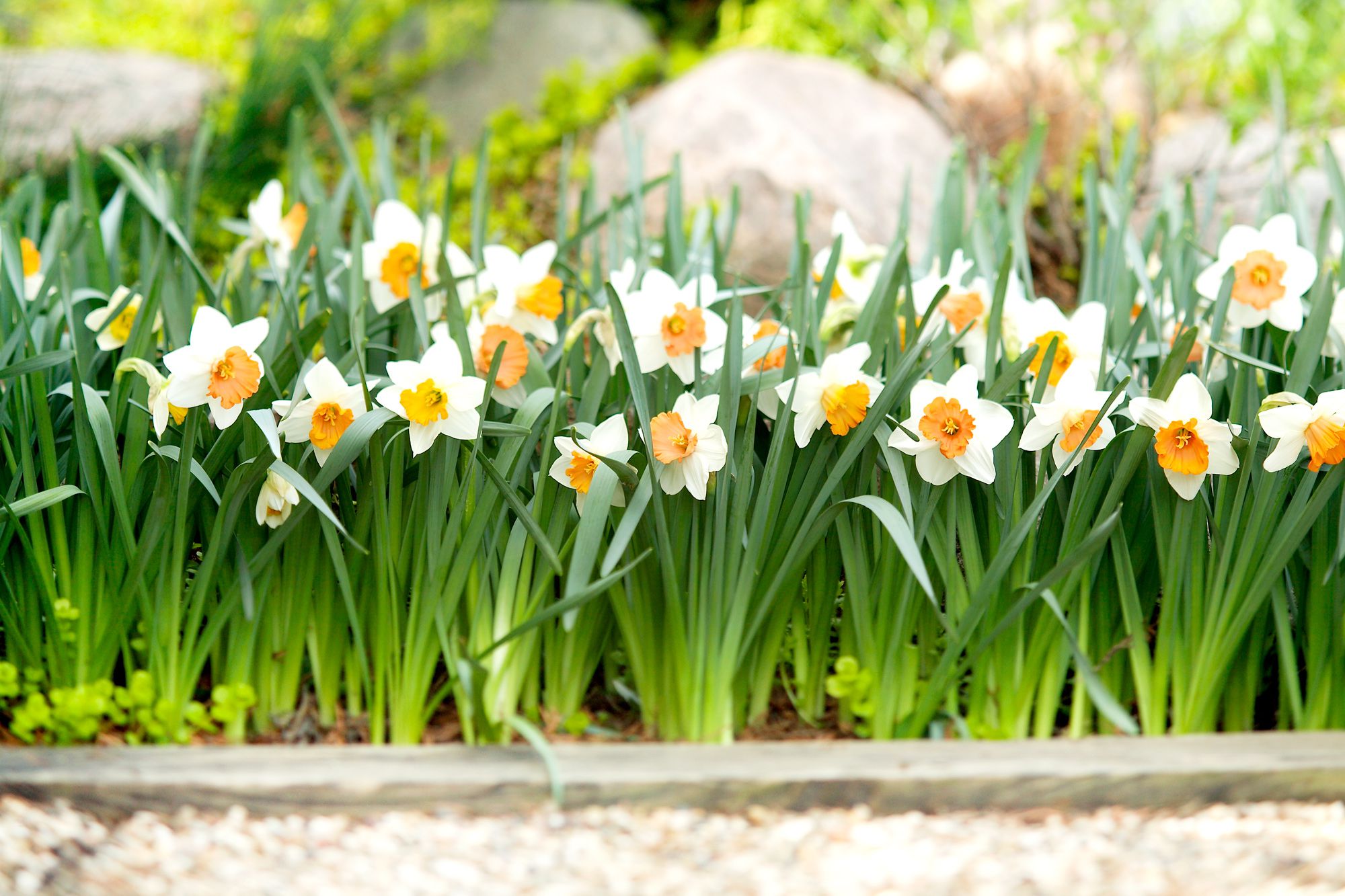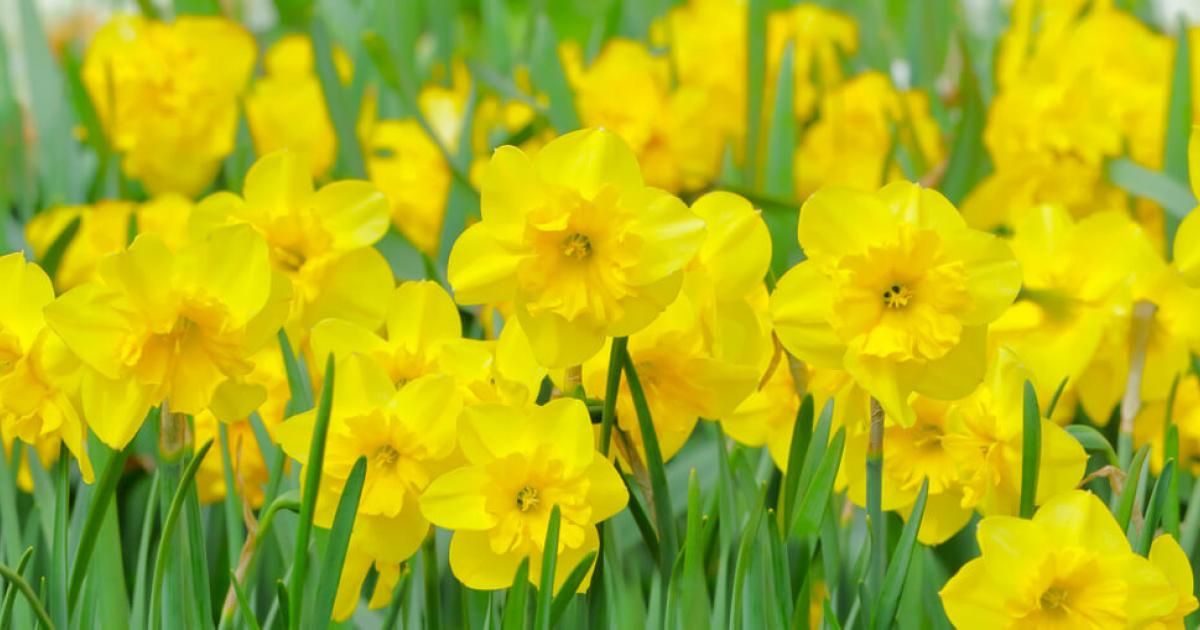Narcissus Flowers Daffodils and Jonquils

We all love the early flowers of the spring months. But some of them need to be launched in the fall to produce these beautiful displays. Narcissus flowers are at the top of this list.
Daffodils, daffodils and daffodils all belong to the same genus of plants and are easy-care plants. These produce bright and showy flowers in sunny places, which delight the eyes. And a few even produce a sweet scent, too!
Excited to see Narcissus flowers pop up after a cold winter? You’re not alone. Read on to find out how to make this productive spring surprise appear!
The genus Narcissus is very large and occupies a lot of land. A large number of plants are included in this genus.
The American Daffodil Society has established thirteen separate divisions of daffodils. These subdivisions are usually based on The Shape of the flower, as this is the easiest identification.
Narcissus flowers have three basic components. At the back of the flower is the hypanthium, also called the flower tube. This is the point at which the flower joins the stem. The tepals, or petals that form the base of the flower, rest low on the perianth (base) of the flower. Finally, in the center is the crown, which forms the well-known tube shape or trumpet shape.
Most people identify daffodils, daffodils or daffodils only by this crown. Some species have a more distinctive shape than others, but they are all beautiful!
It is estimated that there are up to 32,000 cultivars of these beautiful flowers. But what is the difference between a daffodil and a daffodil? And is there a difference between daffodils and Daffodil flowers?
The simple answer is that daffodils usually belong to the Jonquilla Division. More rarely, they can be identified by their botanical name for wild specimens.
The terms daffodil and Daffodil are usually interchangeably different. Exceptions to this rule exist! The Narcissus White Paper is a good example of this, as they use narcissus as a common name. But for the majority, the terms are easily interchangeable.
Of course, this can cause a little confusion, especially when identifying certain specimens. Therefore, specific cultivar names are used to identify Narcissus flowers as much as possible. It’s much easier that way!
Care For Narcissus Flowers
Surprisingly low maintenance, your daffodils and daffodils are easy to care for. If you give them the perfect environment, you will have years of flowers.

But the care of the daffodil is not without tricks. Knowing when to plant daffodils is important. There are specific light requirements for daffodils and watering daffodils can practice. Now let’s go over the main aspects of growing daffodils and daffodils!
Planting Narcissus Flowers
Your bulbs should be planted in the fall, about 2-4 weeks before the soil freezes. Be sure to wait until the summer heat begins to ebb.
It is also important to put your bulbs in the ground as soon as possible after purchase. Waiting too long can cause them to start to shrivel. If you have to wait, store them in a dry, well-ventilated place at a constant 60-65 degrees… but don’t wait too long!
Choose a place with lots of sun. Partial shade is also acceptable as long as they are able to get a reasonable amount of sun during the day. Slopes and raised beds are perfect, but they can also be grown in deep containers if necessary.
Once you have prepared your soil, measure the height of your bulb. Normally, you want to plant it as deep as twice its height. For example, if you have a 2″ long bulb, plant it at least 4 ” deep. Plant deeper in more sandy soil or shallower in clay soil.

People who live in warmer climates need to know if their bulbs are pre-cooled. This treatment is often carried out by producers to simulate colder winter months.
If your supplier did not pre-cool the lamps, you may have to do it yourself. Store your bulbs in a ventilated bag in the refrigerator. Paper towels can help absorb excess moisture. Keep them in the range of 40-50 degrees for 12-16 weeks before their autumn planting.
Light and temperature
Full sun is perfect for narcissus flowers. Some varieties also tolerate partial shade, as long as they have at least 6 hours of sunlight per day.
These plants are surprisingly cold-tolerant. In the United States, they grow all the way to the Canadian border! All Narcissus plants need a certain amount of cold to bloom in spring. They are used to colder temperatures.
Optimal solid growth can be achieved in USDA zones 4 to 8. With careful monitoring, this can be extended to zones 3-9. In zones 10-11, daffodils work best as annuals, but they need cold treatment.
Although cold temperatures do not finish the bulbs, temperatures below 29 degrees can damage the plant. If you have a” false spring ” condition that causes your plants to start growing Early, be careful. A sudden cold snap can damage tender buds or flowers.
Protecting yourself from these cold snaps is as easy as installing a cold frame. If you don’t have a cold frame, place stakes higher than your plants in the bed. Drape a plastic sheet or an old sheet over the posts so that it does not touch the plants. This helps to maintain the heat of the soil.

Water and humidity
Watering your daffodils should be easy. But for many it seems a little confusing. Let’s make it super simple!
When your narcissus bulbs are planted for the first time, water deeply. This will ensure that the soil around the bulbs is moist, but not waterlogged. Keep it moist.
As your plants begin to produce leaves and buds, increase your watering frequency. At this point, you should deliver about an inch a week. This should be enough moisture for your growing plants.
Water your narcissus only in the morning, as the plants can then fill up early in the day. The extra moisture they retain fills the cell walls of the plant. This will add an additional layer of protection against sudden freezing conditions.
Ground
For narcissus flowers, drainage is key. Persistent excess water around your bulbs can promote rotting conditions.
To avoid this, prepare your flower beds by loosening the soil at least 12″ deep. Work in a high-quality compost, and if you wish, you can add other fabric softeners. A well-draining potting soil mixture will also work.
Your soil should be able to retain moisture, but quickly drain excess moisture. Clay or sandy soils will work, but it is easier to have a looser soil.
Low nitrogen fertilizer is best for Narcissus flowers. Although a high nitrogen content can promote lively growth of foliage, it is not necessary. These plants need additional phosphorus and potassium to create beautiful flowers.
Ideally, use a 5-10-10 fertilizer when the tops of your leaves begin to appear. You can dress it up with this for older plantings, or just scrape a little in the first centimeter of soil for newer ones.
When your plant starts to bloom, top it up with a top quality 0-10-10 fertilizer. The combination of these two fertilizers should be enough for the season.
Spread
The spread of the daffodil can be managed in two ways: by seeds or by dividing the bulbs.
When daffodils Bloom, the fertilized flowers produce seeds. It can take up to five years for these seeds to start blooming once planted. Needless to say, this can be a very long and slow process.
The division of daffodils can take place every 3-5 years, but is not absolutely necessary. Among bulbous plants, Narcissus flowers tend to accept more crowded spaces. If you want to expand your garden, this is a great way to get new plants for free!
You can divide the bulbs at any time when they are not actively blooming. I recommend doing this while the foliage is still attached, as it is easier to find the base of the bulbs. The foliage may be vibrant and green or may have already turned yellow.
Start by loosening the soil around your daffodils with a shovel. Be careful not to accidentally cut the bulbs or their root systems. You should go at least 12″ below the floor surface.
